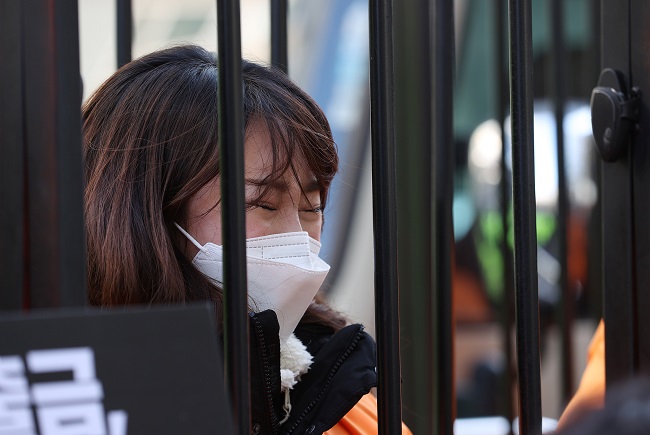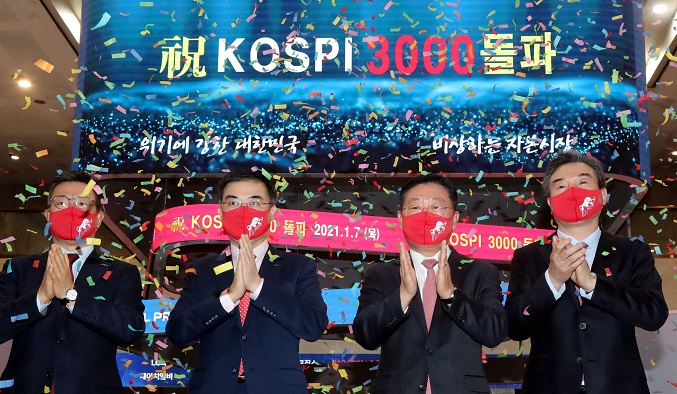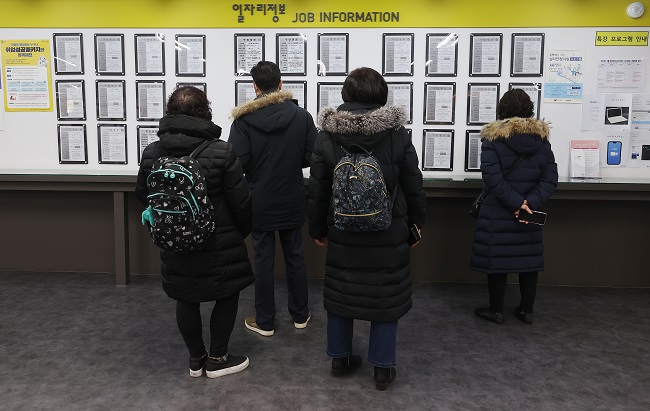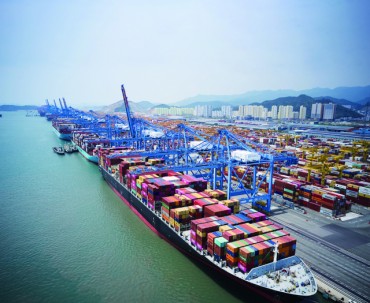
In this file photo, a member of a Pilates business owner association sheds tears during a press briefing held in front of the ruling Democratic Party’s office in western Seoul on Jan. 5, 2021, to raise the issue of fairness regarding the government’s social distancing guidelines for indoor sports facilities. (Yonhap)
SEOUL, Jan. 20 (Korea Bizwire) — When the novel coronavirus first arrived in South Korea a year ago, Bang Su (alias) didn’t know it would upend her career and family all of a sudden.
The Pilates instructor worked less than two months last year as on-and-off social distancing measures restricted the operation of a sports center run by the Seocho ward office.
Two rounds of emergency relief handouts worth 2.1 million won (US$1,897) were not enough for the 36-year-old single mother of a teenage son, who used to earn more money than the subsidy a month.
“As my son spent more time at home to attend online classes, I needed more money for grocery shopping and other bills,” Bang told Yonhap News Agency. “I’m burning through my savings, trying to be frugal as much as I can.”
The instructor said she shelved her anticipated plan to open her own studio and is now searching for jobs while preparing documents to apply for the third round of relief funds, which will be given to freelancers and smaller merchants hit hard by the virus ahead of the Lunar New Year’s holiday in early February.
“I don’t know when the coronavirus will end so I can get back to normal,” Bang lamented. “I’m nervous about my future.”
Bang is one of many who lost jobs or saw their income drop in the wake of the coronavirus pandemic that has wreaked havoc on the job market in Asia’s fourth-largest economy.
In 2020, South Korea shed the largest number of jobs since 1998, when the country was in the midst of the 1997-98 Asian financial crisis.
The infectious virus dealt a heavier blow to workers in experience-focused businesses, including the travel, hospitality, retail and food sectors, while white-collar office workers remained relatively unscathed as they were able to work from home.

In this file photo, officials at Korea Exchange celebrate during a ceremony to mark the benchmark Korea Composite Stock Price Index’s (KOSPI) breakthrough of the 3,000-point mark for the first time in its history. (Yonhap)
Prolonged social distancing measures aimed at minimizing people’s activities inflicted more damage on temporary workers, many of whom work in low-paying service sectors.
A survey by Embrain Public on 1,000 salaried workers aged between 19 and 55 showed that 36.8 percent of the non-regular workers had lost jobs since the virus outbreak in the nation in January 2020, and the proportion is double of that for regular workers.
“For the whole year, the face-to-face service sectors suffered larger job losses, and temporary workers, young adults and those in their 30s took a beating,” Jeong Dong-myeong, a senior Statistics Korea official, said.
The bleak reality of temporary workers and small business owners is a sharp contrast to the rally on the local stock market and in housing prices supported by ample liquidity, following the rate cut by the country’s central bank to an all-time low of 0.5 percent in May last year.
Although the pandemic hampered the domestic demand and job market, it turned out to be a blessing in disguise for deep-pocketed individuals who were willing to unlock new investment opportunities in a time of crisis.
Kim Dong-young, a 42-year-old employee at a major IT company in Seoul, said it was a lucrative year as both his apartment and stock prices rose sharply, at least on paper.
Soon after the coronavirus pandemic hit the nation, his company took advantage of its digital tools to allow employees to work from home using a group communication app and a cloud-based project management system.
“As I spent more time at home and reduced spending on travel and dining, I could save more money and put them in the stock market. I even took out some loans to leverage my investment,” Kim said.
“I mostly invested in IT and bio companies related to COVID-19, and it turned out to be a smart choice.”
The benchmark KOSPI index broke above the 3,000-point mark for the first time on Jan. 6 on the back of retail investors’ strong buying. The KOSPI jumped 31 percent last year alone.
Behind the boom were chipmakers and platform operators, which were expected to benefit from the accelerated transition to the digital, contactless economy, as well as bio and battery shares.

People stand in line to attend a presentation on how to receive unemployment benefits at a labor welfare center in Seoul on Jan. 13, 2021. (Yonhap)
Industry watchers say the strong equity market reflects anticipation for a rebound amid global vaccination drives but expected the pace of recovery to be different between sectors and businesses, known as a “K-shaped recovery.”
The diverging strokes of the letter K represent the differing fortunes of the haves and have-nots following the economic downturn.
“Large companies are well prepared to make a robust recovery, but small and medium companies and the self-employed are limited in adapting to the changing business environment,” Choo Mun-gap, an official of the Korea Federation of SMEs, said.
Industry observers say Korea’s economic outlook for this year will depend on whether the government can effectively contain the latest virus outbreak and vaccinate a majority of the population.
“The government has to go all-in in antivirus efforts to prevent the pandemic from hampering economic recovery, and ramp up budget spending in the coming months to mitigate fallout of the virus resurgence in the winter season,” Hyundai Research Institute, a private think tank, said in a report.
On growing concerns over a widening wealth gap in the post-COVID-19 era, the ruling Democratic Party chief Lee Nak-yon last week proposed a profit-sharing scheme to promote lucrative companies sharing some of their profits with small businesses vulnerable to pandemic losses, which drew strong backlash from opposition lawmakers and the business community.
As the economy is heading toward an uneven recovery in the post-pandemic era, policymakers should more carefully draw up stimulus measures to support lagging sectors and provide a buffer for underprivileged people.
“Even if COVID-19 subsides by the end of this year, we can’t go back to the pre-pandemic era,” Woo Seok-jin, an economics professor at Myongji University, said.
“Economic inequality, divides between large firms and SMEs as well as between platform companies and the self-employed will continue even after COVID-19.”
(Yonhap)






